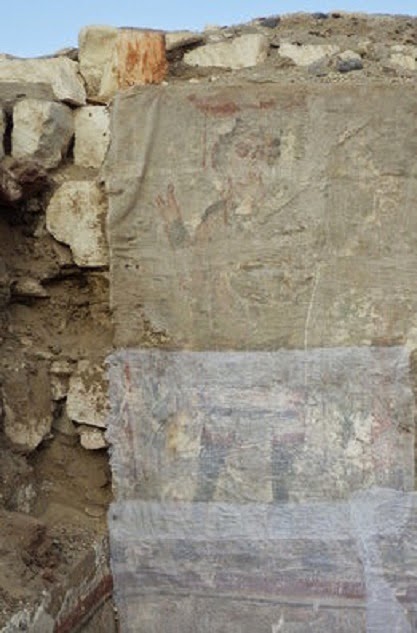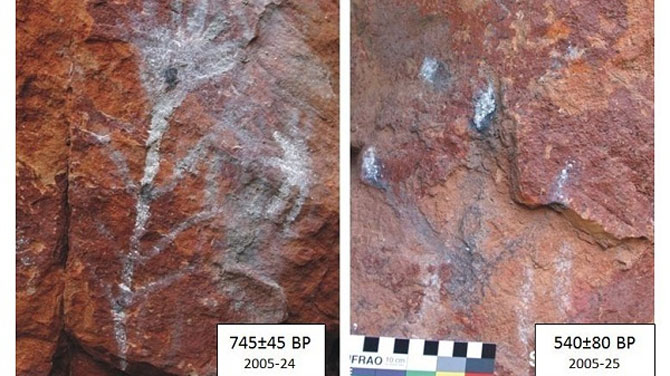
At http://archaeologynewsnetwork.blogspot.co.uk/2014/04/early-coptic-image-… … at the Egyptian city of Oxyrhynchus, a 6th century Coptic painting has turned up in what was thought to be a tomb – but may be something quite different. The underground structure depicts the figure of a young man with curly hair dressed in a tunic with a raised hand – as if making a blessing. Archaeologists seized on the idea it might depict Jesus. However, there are plenty of inscriptions nearby but as yet these have not been translated.

Meanwhile, at www.pasthorizonspr.com/index.php/archives/04/2014/new-c14-technique-help… … where paint is dated at a plasma oxidation laboratory in Arkansas before going to Berkeley (California) for Mass Spectrometry analysis. The paintings date between two and three thousand years ago.
At www.livescience.com/45102-cahokia-decline-mississippi-flood.html … Cahokia, some six miles square in extent was located at the confluence of two major rivers. This enable it to grow into a vast trade emporium – but also was one of the reasons why it disappeared. It is being suggested that a huge Mississippi flood swamped Cahokia, a not unusual occurrence even in the modern world. A silty deposit 19cm thick has been discovered – and dated 1200AD (+ or – 80 years). It could therefore have occurred close to 1258AD (se Steve Mitchell's article on this date in Europe in the latest Workshop). However, Cahokia survived and lived to trade another day – but was abandoned around 1350AD (reasons unknown). Could it be that Plague broke out in N America at about the same time as it did in the Old World. This may never have been looked at as rats are supposed to have been the carriers of plague and they could hardly swim across the Atlantic. Whatever, the demise would have been contemporary with climate change in Europe.
